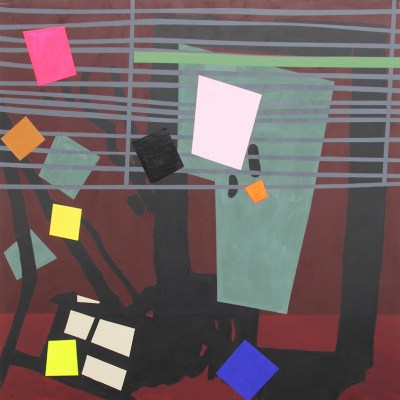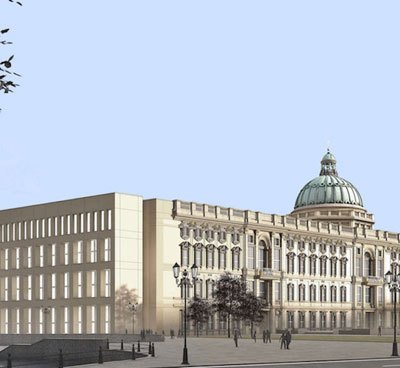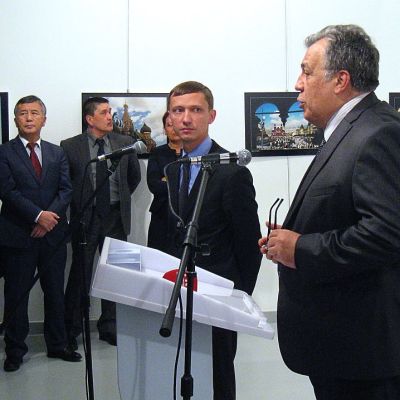Top billing, since it opens in January, goes to ‘Michael Andrews: Earth Air Water’ at Gagosian London (20 January–25 March). Andrews has never had the exposure of his School of London contemporaries such as Lucian Freud and Leon Kossoff: he didn’t create a large body of work and was never very interested in the limelight. There haven’t been many opportunities to see a crop of his works hung together since the Tate Britain retrospective in 2001. This show includes a focus on his Lights series from the early 1970s, enigmatic metaphysical landscapes, in which piers, bridges and shorelines are seen from a balloonist’s perspective – the painter, or his mind, on a quest to find a resting place.
Lights VII: A Shadow (1974), Michael Andrews. © The Estate of Michael Andrews. Courtesy James Hyman Gallery, London

The spring blockbuster at the National Gallery is ‘Michelangelo & Sebastiano’ (15 March–25 June), which will explore the relationship between the two artists as friends and collaborators from 1510 until the 1540s. I was lucky to see one of the exceptional loans, Sebastiano’s Pietà, in the shabby surroundings of its permanent home, the Museo Civico in Viterbo, last year; I can’t wait to see this desperate nocturnal scene of loss and lamentation presented as part of a wider narrative of painting in and around Rome in the early 16th century.
Lamentation over the Dead Christ (‘Pietà’) (c. 1512–16), Sebastiano del Piombo. Museo Civico, Viterbo

Two more picks for 2017: firstly, ‘Baroque during the Enlightenment: 18th-century Masterpieces in Paris Churches’ (21 March–16 July), at the Petit Palais in Paris, which brings together showy altarpieces that were displayed in the French capital in a period that we usually associate with more secular or frivolous genres of painting. This should be an exhibition that says much about the relationship between art and architecture in pre-Revolutionary France, and makes us think again about the place of art itself.
Finally, I’m very excited about ‘Opera: Passion, Power and Politics’ (30 September–25 February 2018), the opening exhibition in the new Amanda Levete-designed exhibition galleries at the V&A (and part of the Exhibition Road Project, which opens in July). The show will focus on seven opera premieres – from Monterverdi’s L’Incoronazione di Poppea in 17th-century Venice to Shostakovich’s Lady Macbeth of Mtsensk in St Petersburg in 1934 – and aims to cover music, design, performance, politics, economics, society… It all sounds hugely ambitious, and even like a glorious folly – the ideal match for its subject, in other words.
Thomas Marks is editor of Apollo.
Keep up with Apollo’s 12 Days selection of art highlights here.


